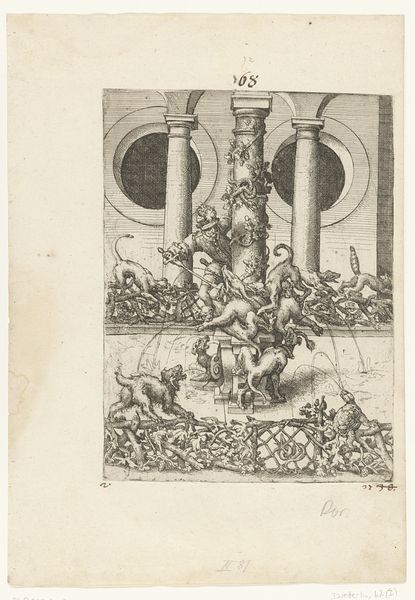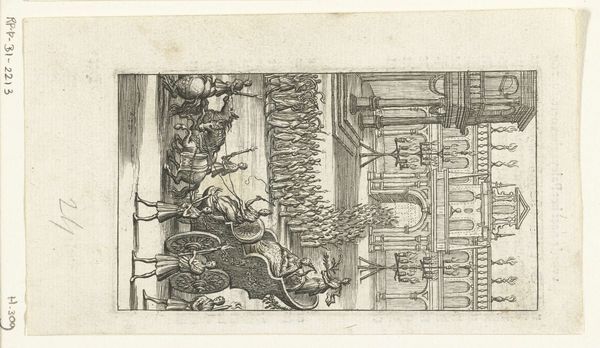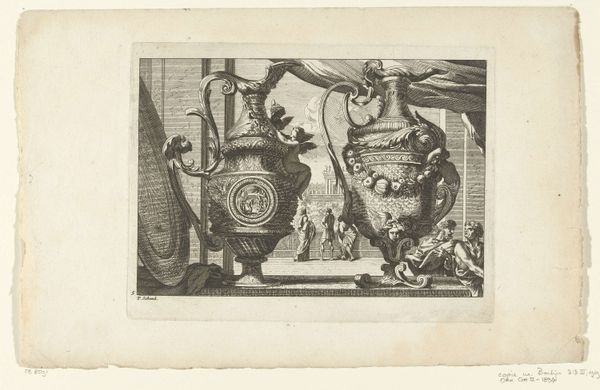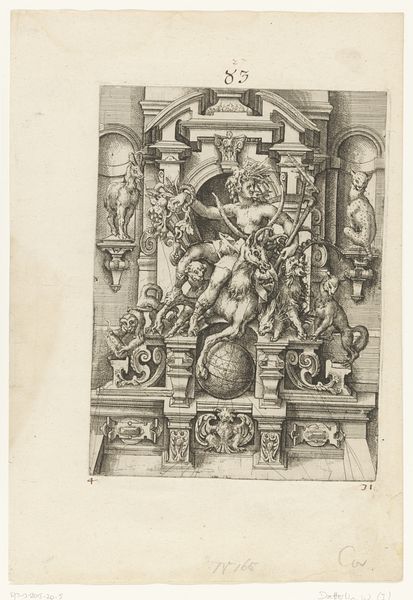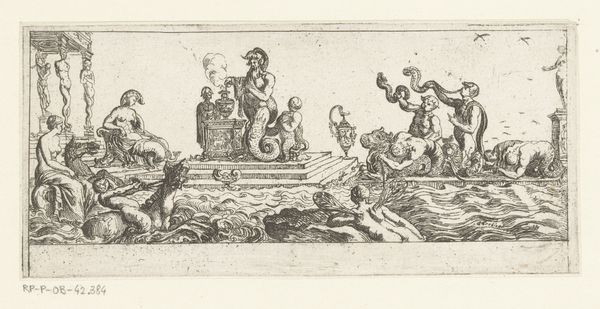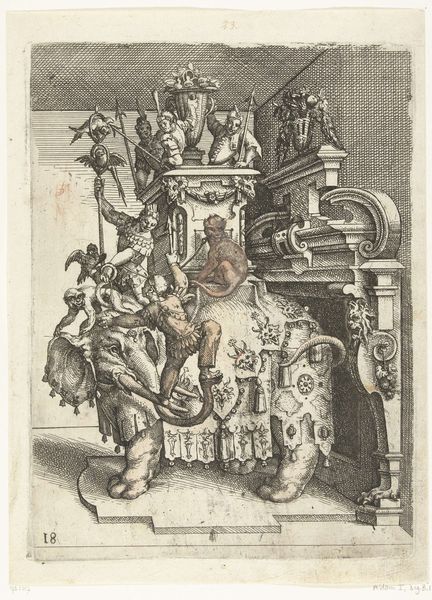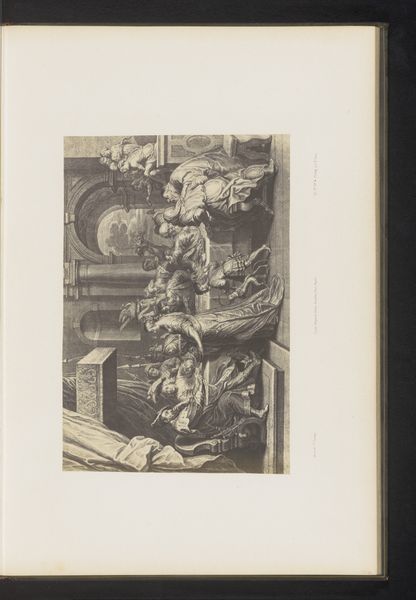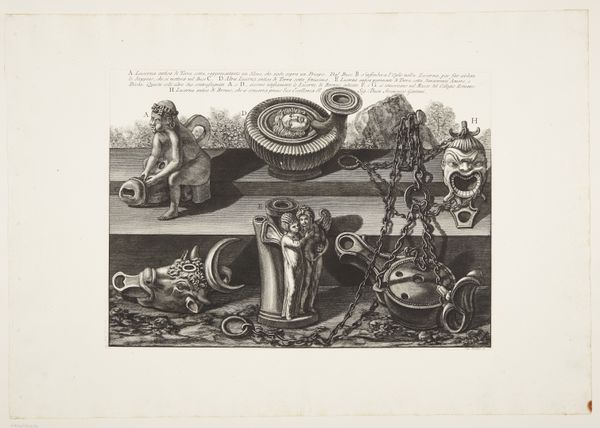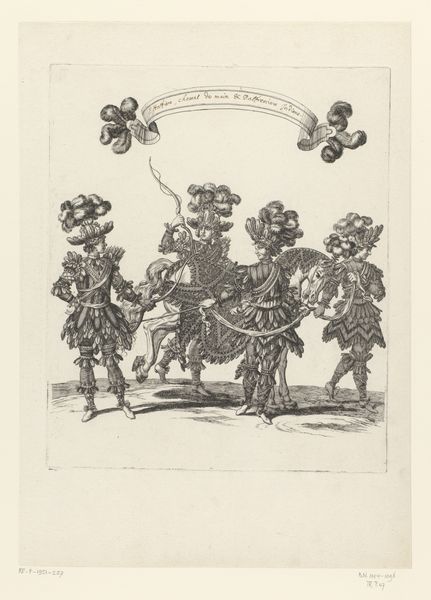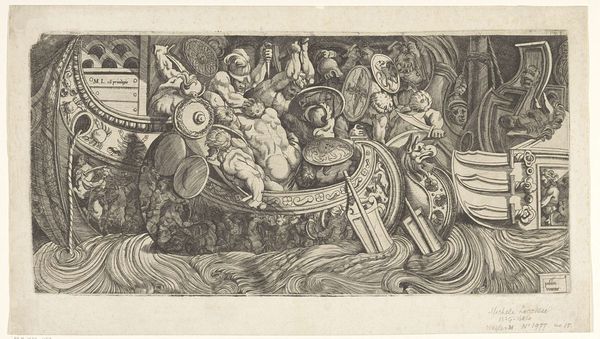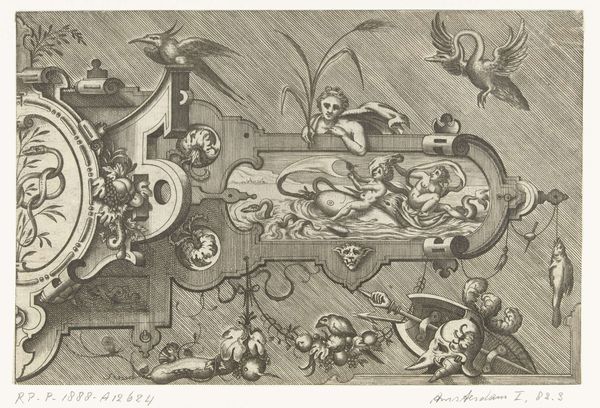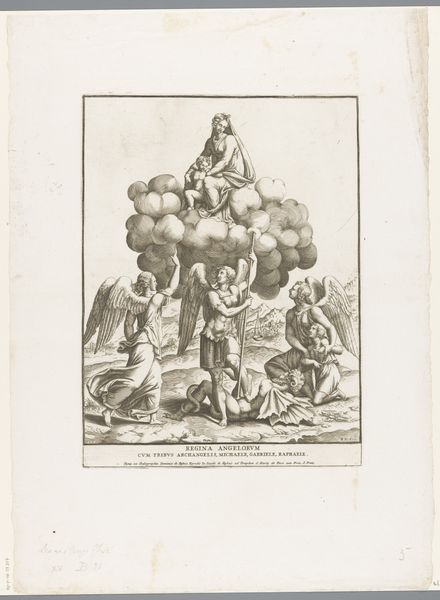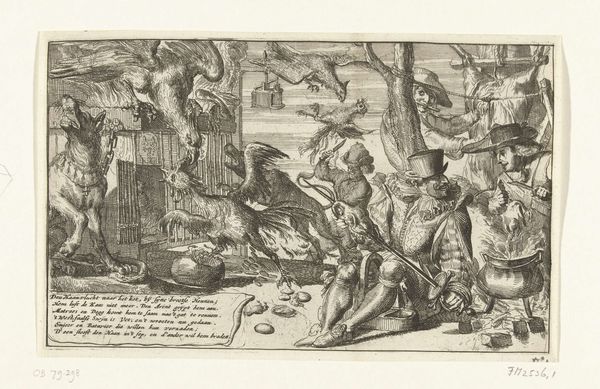
Fantastische fontein met jager en honden in gevecht met een beer before 1595
0:00
0:00
print, engraving
#
allegory
# print
#
mannerism
#
figuration
#
form
#
history-painting
#
engraving
Dimensions: height 246 mm, width 183 mm
Copyright: Rijks Museum: Open Domain
This “Fantastic Fountain” was made by Wendel Dietterlin in the late 16th century, using the technique of etching. Unlike painting or sculpture, etching is inherently a reproductive medium; it’s all about making multiple images, often for dissemination in book form. The process begins with a metal plate, which is covered with a waxy, acid-resistant ground. The artist then draws through the ground with a sharp needle, exposing the metal. When the plate is dipped in acid, the drawn lines are ‘bitten’ into the surface. This creates grooves that will hold ink. The plate is then inked, wiped clean, and pressed against a sheet of paper, transferring the image. Notice the dense, writhing quality of the composition. This is achieved through close hatching of the etched lines, the material process mirroring the intensity of the subject, and the implied violence of the hunt. Because prints can be reproduced and sold relatively cheaply, they democratize images, making them available to a wider audience. Dietterlin’s fountain, though purely imaginary, could reach many more people as an etching than if it were actually built.
Comments
No comments
Be the first to comment and join the conversation on the ultimate creative platform.
